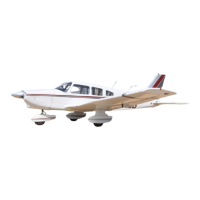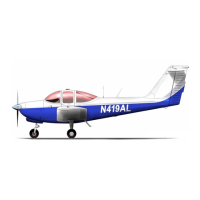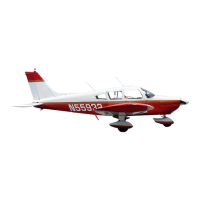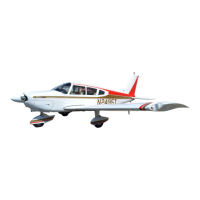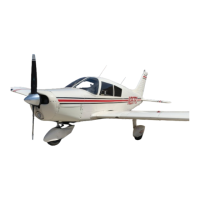THE NEW PIPER AIRCRAFT, INC.
PA-32-301FT / 301XTC
MAINTENANCE MANUAL
PAGE 9
Jun 1/03
4D13
51-00-00
C. Deep scratches, Shallow Nicks and Small Holes: (Less than 1 inch diameter.) (See Figure 3.)
(1) Solvent cements will fit virtually any of these applications. If area to be repaired is very small, it
may be quicker to make a satisfactory cement by dissolving thermoplastic material of the same
type being repaired in solvent until desired paste-like consistency is achieved.
(2) This mixture is then applied to damaged area. Upon solvent evaporation, hard durable solids
remaining can easily be shaped to desired contour by filing or sanding.
(3) Solvent adhesives are not recommended for highly stressed areas, on thin walled parts or for
patching holes greater than 1/4 inch in diameter.
(4) For larger damages an epoxy patching compound is recommended. This type material is a two
part, fast curing, easy sanding commercially available compound.
(5) Adhesion can be increased by roughing bonding surface with sandpaper and by utilizing as
much surface area for bond as possible.
(6) Patching compound is mixed in equal portions on a hard flat surface using a figure eight
motion. Damaged area is cleaned with perchlorethylene or VM&P Naptha prior to applying
compound. (Refer to figure 4.)
(7) A mechanical sander can be used after compound is cured, providing sander is kept in
constant motion to prevent heat buildup.
(8) For repairs in areas involving little or no shear stress, hot melt adhesives, polyamids which are
supplied in stick form may be used. This type of repair has a low cohesive strength factor.
(9) For repairs in areas involving small holes, indentations or cracks in material where high stress
is apparent or thin walled sections are used, welding method is suggested.
(10) Welding method requires a hot air gun and ABS rods. To weld, gun should be held to direct
flow of hot air into fusion (repair) zone, heating damaged area and rod simultaneously. Gun
should be moved continuously in a fanning motion to prevent discoloration of material.
Pressure must be maintained on rod to insure good adhesion. (Refer to Figure 5.)
(11) After repair is completed, sanding is allowed to obtain surface finish of acceptable
appearance.
D. Cracks: (Refer to Figure 6.)
(1) Before repairing a crack in thermoplastic part, first determine what caused crack and
alleviate that condition to prevent it recurring after repair is made.
(2) Drill small stop holes at each end of crack.
(3) If possible, a double plate should be bonded to reverse side of crack to provide extra strength
to part.
(4) Crack should be V-grooved and filled with repair material, such as solvent cement, hot melt
adhesive, epoxy patching compound or hot air welded, whichever is preferred.
(5) Affter repair has cured, it may be sanded to match surrounding finish.
E. Repairing Major Damage: (Larger than 1 inch in diameter.) (Refer to Figure 7.)
(1) If possible a patch should be made of same material and cut slightly larger than section being
repaired.
(2) When appearances are important, large holes, cracks, tears, etc, should be repaired by cutting
out damaged area and replacing it with a piece of similar material.
(3) When cutting away damaged area, under cut perimeter and maintain a smooth edge. Patch
and/or plug should also have a smooth edge to insure a good fit.
(4) Coat patch with solvent adhesive and firmly attach it over damaged area.
